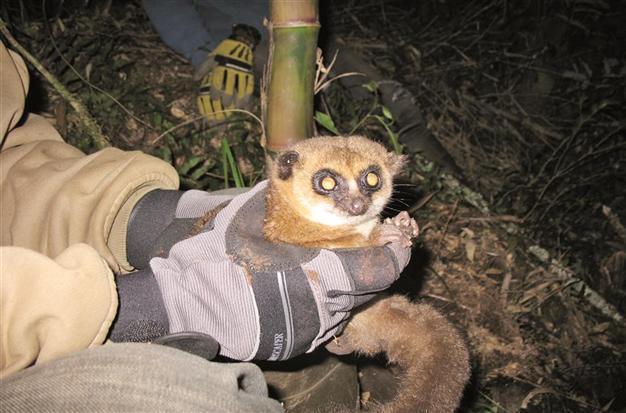Study reveals long secrets of lemurs
PARIS - Agence France-Presse

Madagascar dwarf lemurs burrow deep into the soil and curls up for a three to six month-long sleep. AFP photo
Scientists curious about the winter time vanishing act of a Madagascar dwarf lemur type were astonished to find the animals burrowed deep into the soil, curled up for a months-long sleep.
The discovery makes the island country’s eastern dwarf lemurs the only primates in the world known to hibernate underground.
The fat-tailed lemur, a cousin from the slightly warmer, drier forests of western Madagascar, was already known to hibernate in tree holes for about seven months of the year. Researchers long suspected the eastern lemurs may be doing the same, but could never find them.
“You don’t see them, trap them or find them during the dry season (winter time) while walking the forests at night,” study co-author Marina Blanco of Germany’s Hamburg University told AFP.
“They had to go somewhere...” And so the team fitted radio-transmitter collars on 12 lemurs from two eastern species in summer, and waited.
Three to six monthsThe species, Sibree’s dwarf lemur and Crossley’s dwarf lemur, live in the forest of Tsinjoarivo. Setting out in winter with signal trackers, the team fully expected to find the lemurs sleeping in tree holes.
“We didn’t see anything so we started to dig up the area and found a furry ball, the lemur was curled up and cold to the touch, still wearing its collar.”
They hibernated for anything from three to six months buried 10 to 40 centimeters under a spongy layer of tree roots, soil and decaying plant matter. It is uncommon for primates to hibernate, in fact the western fat-tailed lemur was previously the only primate known to do so.
